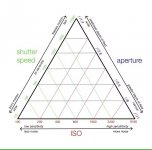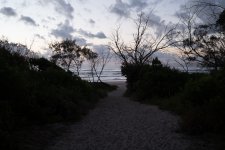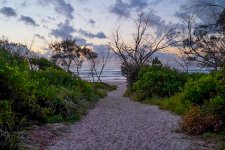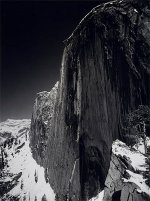If you have a DSLR then understand that you cannot make great pictures without getting good at #4. Without understanding photo editing software such as Lightroom, you will never make great pictures. You can take good pictures, sometimes very good pictures, but if you want great pictures then you need to learn how to use Post-Processing software. Post-Processing is what makes good pictures into great pictures. Pick who you think are the 5 best photographers on this site. They all do Post-Processing. If you want to be on their level then you need to do Post-Processing also. Even phones, such as the iphone 15 Pro do Post-Processing right in the phone. If you are not doing Post-Processing, go to the back of the line.
The above advice by
@acrid is excellent for shooting with HPS lights. Always shoot in RAW if you want GREAT pictures. Not that RAW itself makes a great picture, but, RAW files are huge and contain much more data for you to Post-Process with. That is what makes a great picture. Afterwards convert that great picture to .jpg.
Some very quick tips:
Never use AUTO setting. If you are using AUTO on a DSLR what you really need is a $100 'Point and Shoot'. Learn how to use M, A, S, P settings and why. That is where the great pictures start.
Keep ISO at 100 or you start introducing noise(grain) into the picture. There are a few occasions when you can raise the ISO higher. For example, night time pictures. Some camera's handle high ISO better than others.
A tripod with a cable or remote shutter release can be great for eliminating camera shake(blur). In this case you could get by without them but they are good tools to have in the toolbox.
A clear lens cover for each lens. This does not help your photography but it does keep your expensive lens from getting scratched or dirty.
All things being equal, a DSLR will ALWAYS take a better picture than a phone. The DSLR has a sensor many times bigger than a phone sensor.
If any of your comments or answers contain the phrase 'I don't have the money right now', great photography is not in your future. Stick to your phone, they take decent pictures. Sounds harsh but it is the truth.
A camera with a good sensor, a good lens, good understanding of light, and free editing software will take you a long way.
As
@Swifty says, take lots of pictures and learn your settings. Practice, practice, practice. Anyone on this site consistently posting up great pictures has spent hundreds of hours on learning their settings and Post-Processing. Keep in mind, Post-Processing is the great Photography 'open secret'. Do not tell anyone you are doing it as many consider it cheating(j/k). It is not. Post-Processing is pretty much allowed in any photo contest worldwide. Certain Post-Processing tricks such as 'Photo-stacking' is not allowed in contests except for stated 'Photo-stacking' contests.
Back in the days of SLR with Darkrooms and trays of liquid to develop the film, Post-Processing tricks like dodging and burning were used to lighten or darken the picture. Filters were used on the lens to lighten or darken things. Colored filters were used to make grass greener or the sky bluer, the sunset redder. All tricks we learned that Ansel Adams and others were using to get such great pictures. Photo manipulation has been going on since camera's were invented. It is almost the only way to get a great picture as the human eye and camera's do not see things the same way.
What make/model camera do you have? What len(s)? Different lens for different jobs.
Keep us posted on what you are doing/are going to do. Ask lots of questions. Maybe we can all learn something. I think the site does need a 'sticky' for various types of plant photography. Not a thread with shit scattered over a hundred pages but a honest to goodness, well organized sticky(s)
Hope this helps,
Longball







